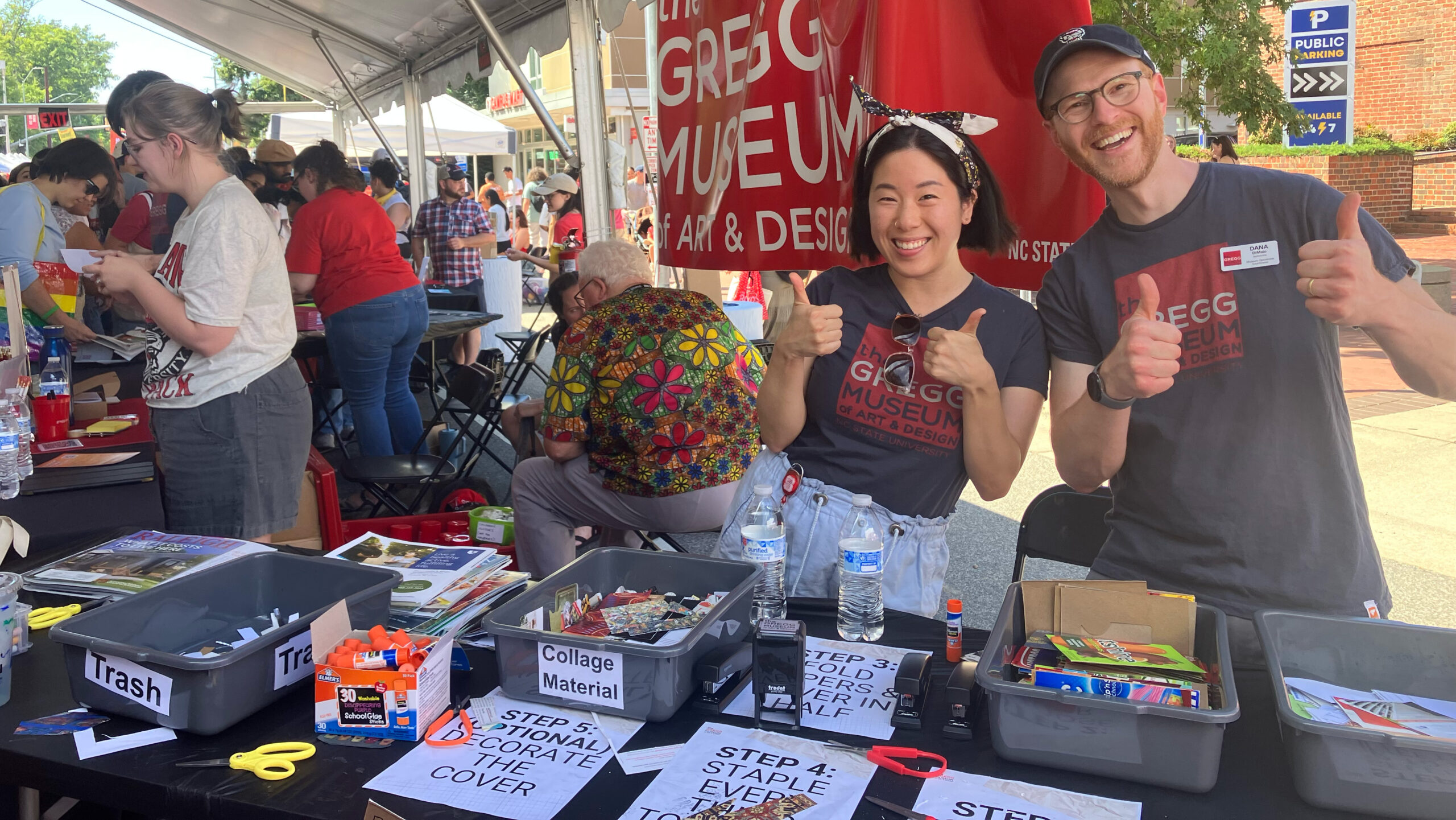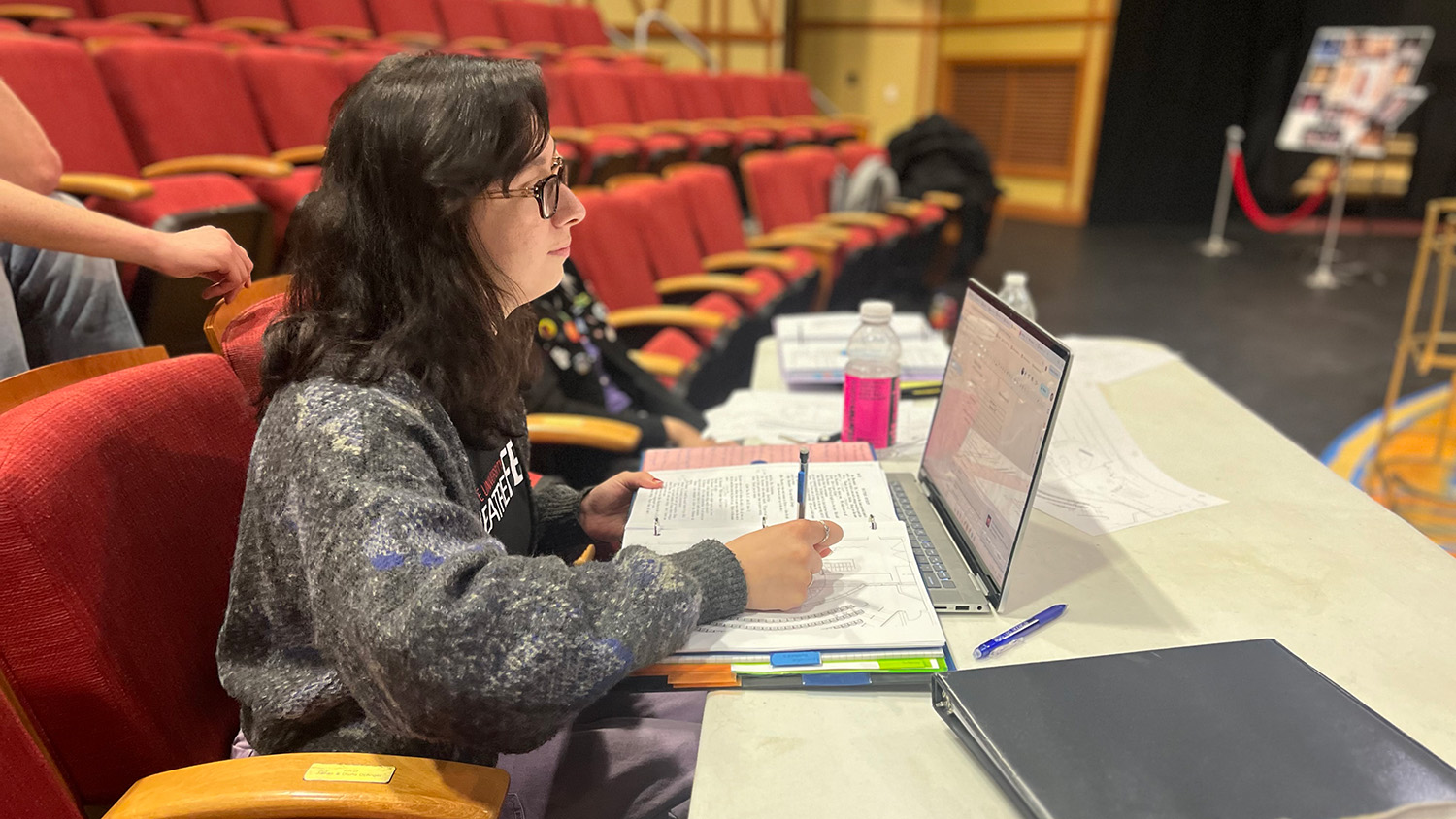Meet the Dinosaur: Crafts Center Aids Science Museum in Preparing New Exhibit
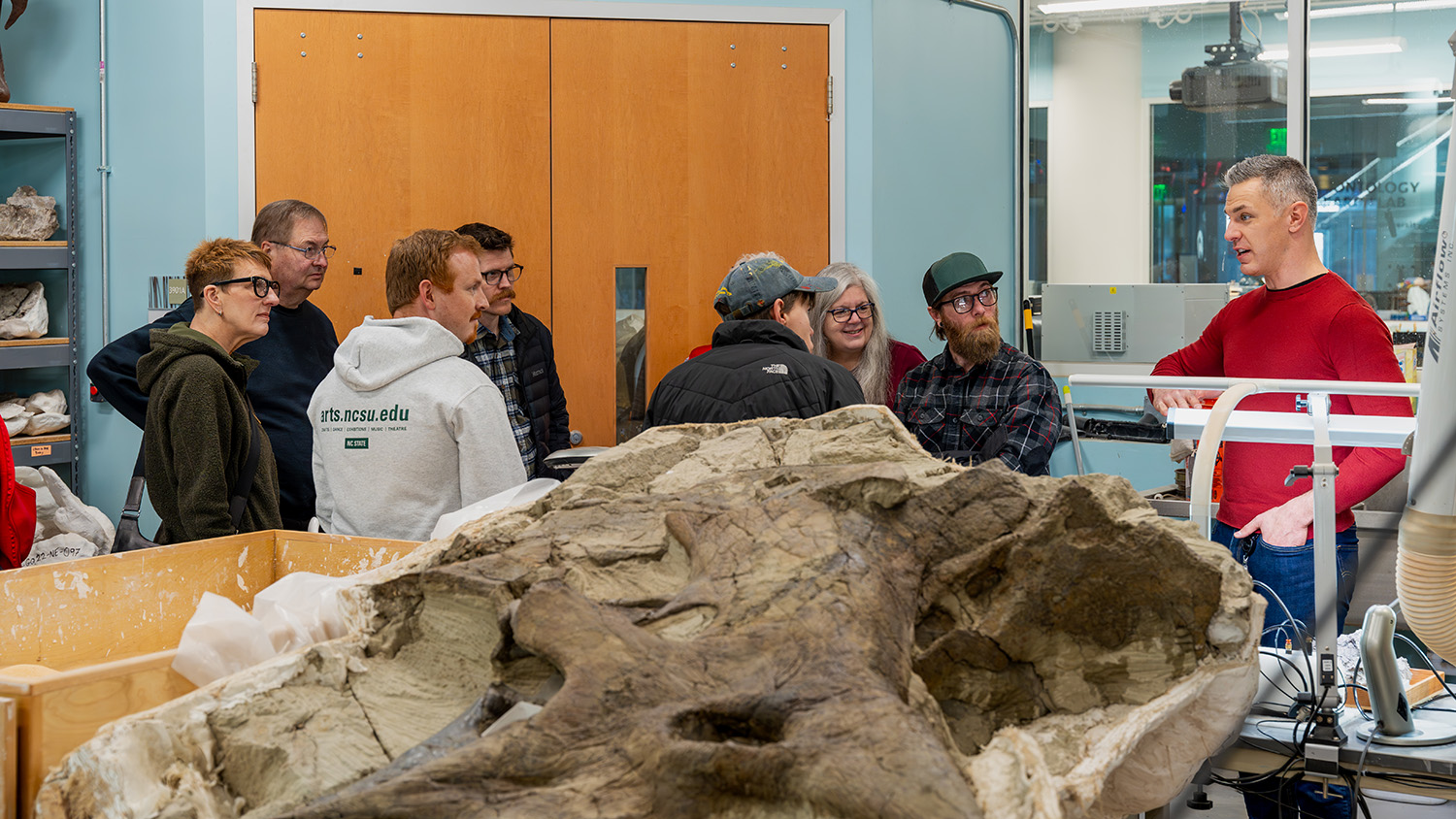
On a typical day, the saw in the NC State Crafts Center’s lapidary studio is used to cut and trim thick glass used in fusing and slumping projects, or slabs from rocks and semi-precious stones used to fashion cabochons (polished and shaped gemstones).
On certain days over the past eight months, however, visitors to the studio have been lucky enough to see a relic of a long past age on Earth.
As part of the preparations for the North Carolina Museum of Natural Science’s “Dueling Dinosaurs” exhibit, which will open early in 2024, paleontologist Jennifer Anné, the assistant lab manager of the museum’s SECU DinoLab, has used the center’s rock saw to cut open dinosaur bones.
Anné explained that one of the areas of research in the paleontology department is histology, which involves looking at the microstructure of dinosaur bones, including some very large bones.
The museum has the equipment to cut smaller sections of bone, but Anné needed the equipment to cut larger pieces. Enter the Crafts Center, where Anné used a saw blade well-suited to cutting stone to cut the fossils.
“I was curious to see what other areas might have the kind of saws and equipment that we need, and thought, ‘I wonder if NC State has anything,” Anné said. “I came across the Crafts Center and that they had a lapidary studio and I thought, why don’t I reach out to them? Artists are always thinking of problem solving.”
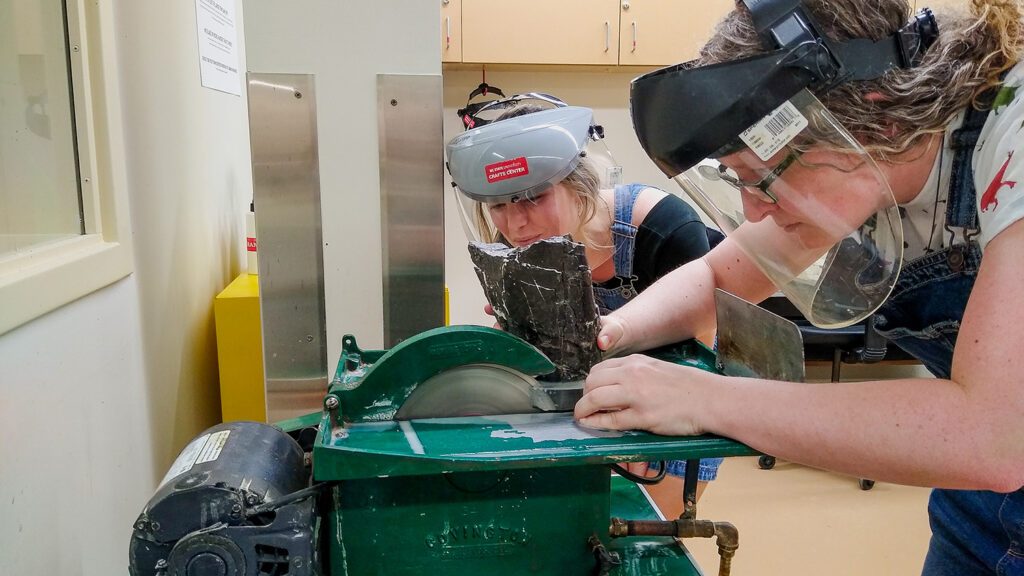
Anné has used the Crafts Center’s saw to cut two different fossils, one of which is from an Allosaurus and will be used as part of the new exhibit to educate the public about histology and its uses within paleontology. Museum visitors will be able to view these sample fossils under a microscope.
The other will be used as part of a larger research project to learn more about one of the dinosaurs in the exhibit. To show the museum’s gratitude, Anné hosted Jo Ellen Westmoreland, the Crafts Center’s assistant director, and a group of center staff on a tour of two of the museum’s paleontology labs currently preparing fossils for display in the new exhibit.
“I am very grateful because I was the one who had to cut them,” Anné said. “If I was not able to find something like this that I could use, it was going to be quite the ordeal. Whenever we’re doing any form of destructive analysis on a fossil, we of course want to try to do as little damage as possible, cut it once and do it right. We’re so grateful that NC State let us do this so we could do it right the first time, and we could keep as much of the fossil preserved as possible.”
If I was not able to find something like this that I could use, it was going to be quite the ordeal.
The use of the lapidary studio saw deepens the existing connection between NC State and the museum, with several graduate students working at the museum under the direction of Lindsay Zanno, a joint appointee between the two institutions.
“To help out in this tremendous exhibit is an honor,” Westmoreland said. “It gave some of the folks in the craft center a chance to come and see that we were partnering with this scientific endeavor and also be able to understand that art and science are not completely separate.”
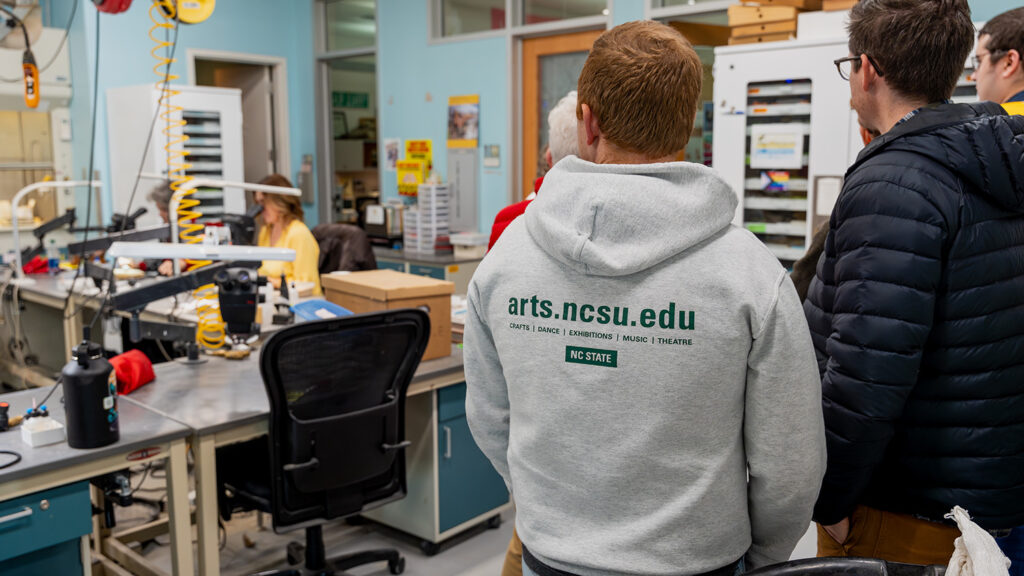
The idea that arts and science can go hand in hand is currently being stressed at NC State through the Arts and Your Major series and other programming.
“There’s a lot of science that’s involved in all of these artistic endeavors,” Westmoreland said. “We have so many science and engineering students who use The Crafts Center. I always looked at engineering as the creative side of science, because scientists are coming up with all this information and all of these discoveries, and the engineers are trying to figure out how to use it for the betterment of humanity and our civilization.”
- Categories:
